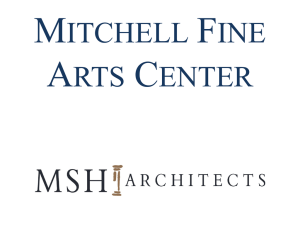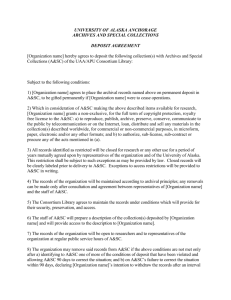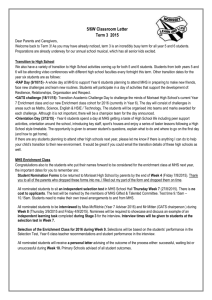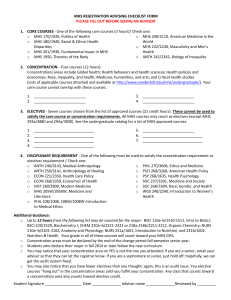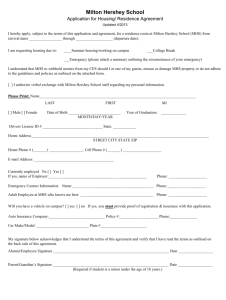PROPOSED ARCHAEOLOGY REGISTER FORM 6//2005
advertisement
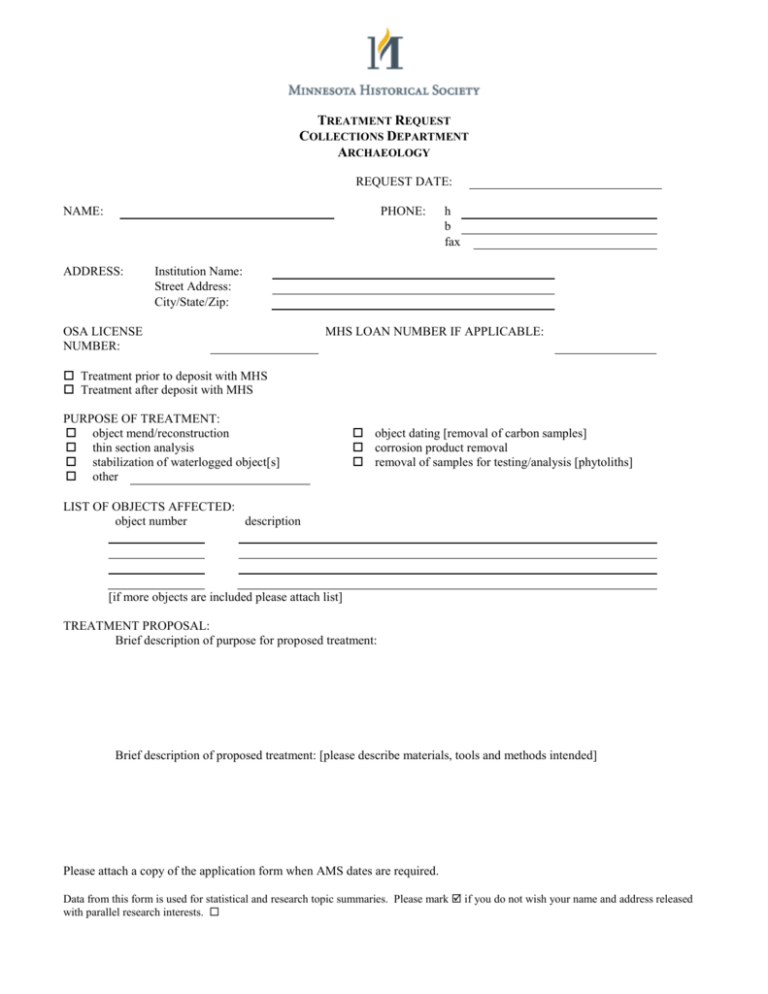
TREATMENT REQUEST COLLECTIONS DEPARTMENT ARCHAEOLOGY REQUEST DATE: NAME: PHONE: ADDRESS: h b fax Institution Name: Street Address: City/State/Zip: OSA LICENSE NUMBER: MHS LOAN NUMBER IF APPLICABLE: Treatment prior to deposit with MHS Treatment after deposit with MHS PURPOSE OF TREATMENT: object mend/reconstruction thin section analysis stabilization of waterlogged object[s] other object dating [removal of carbon samples] corrosion product removal removal of samples for testing/analysis [phytoliths] LIST OF OBJECTS AFFECTED: object number description [if more objects are included please attach list] TREATMENT PROPOSAL: Brief description of purpose for proposed treatment: Brief description of proposed treatment: [please describe materials, tools and methods intended] Please attach a copy of the application form when AMS dates are required. Data from this form is used for statistical and research topic summaries. Please mark if you do not wish your name and address released with parallel research interests. A treatment request form must be submitted for any of the following processes: - Carbon samples to be submitted for dating prior to deposit of the associated collections with MHS Samples to be submitted for phytolith identification prior to deposit of associated collections with MHS Carbon samples to be submitted for dating after deposit of the associated collections with MHS Samples to be submitted for phytolith identification after deposit of associated collections with MHS Stabilization or reconstruction of collections prior to deposit with MHS Stabilization or reconstruction of collections after deposit with MHS (such as during a loan) Minnesota Historical Society staff recognize the importance to researchers of timely project completion and will work to respond quickly to requests for treatment prior to deposit of collections. To ensure the fastest response time, attach a copy of the Treatment Request Form (word document version) to an email and send it to: patricia.emerson@mnhs.org. Please print out the returned request and add it to the collections documentation. If you wish to mail the completed form, please send it to the Head of Archaeology at the address listed below. You will be contacted once your request has been reviewed. Head of Archaeology Minnesota Historical Society Historic Fort Snelling 200 Tower Avenue Saint Paul, MN 55111 or send fax to: @ (612) 725-2429 ****************************************************************************************************** REVIEWS: [ ] Head of Archaeology Name: Date: Comments: Conditions: [ ] Conservator Name: Date: CATAGORY OF TEST/TREAMENT Non-invasive/non-destructive- no sampling: Imaging and surface analysis Point analysis other Comments/Conditions: Invasive investigations- sampling: Non-destructive Para-destructive Destructive Definitions: Non-invasive, non-destructive investigations (no sampling required): Imaging and surface mapping techniques: providing topographic information on areas of the artifact. Point analysis: explores a tiny area on the surface of an artifact. Invasive investigations (sampling required): A sample is removed through mechanical means (e.g. cutting, scraping, drilling, etc.) with minimal damage to the object. Samples remaining after testing must be returned to the MHS with the proper documentation. Non-destructive: carried out directly on an un-mounted sample without altering it. Para-destructive: carried out on a prepared sample (e.g. mounted as a cross-section or thin section showing mineral or other structures). Preparation procedures may induce physical and chemical alterations and prohibit the recovery of the sample in its original form; however, the same sample may be used for other analytical procedures, such as: o Imaging and surface mapping: providing topographic information on an area of the prepared sample (cross section) o Non-invasive point analysis: explores a point-like surface of the prepared sample. Destructive: completely consumes the sample analyzed (e.g. C14 and other isotopic analyses).
